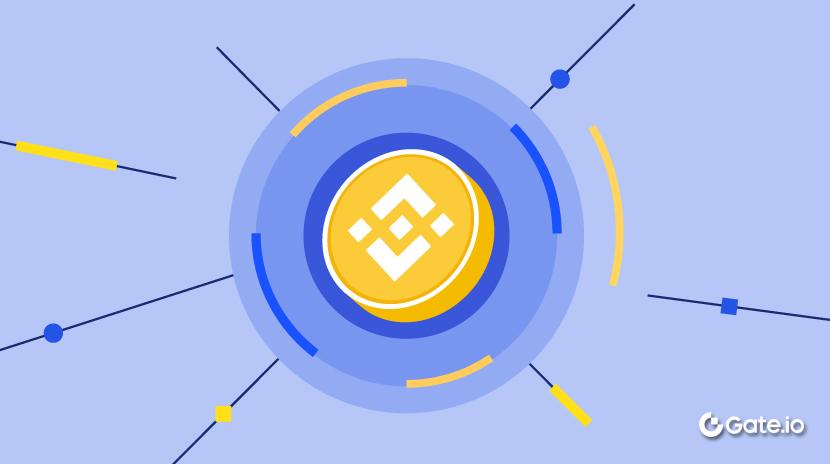Перспективні проекти мемів в екосистемі Berachain
Berachain втілює в собі культуру Мемів, але його Мем екосистема залишається в основному спрямованою на розвиток інфраструктури. Видатний Мемкойн з сильним потенціалом для генерації багатства ще не вийшов на передній план, і більшість проєктів все ще перебувають на своїх початкових стадіях — зіткнення з відомими недоліками в користувацькому досвіді, глибині ліквідності та масштабу спільноти.За підтримкою свого новаторського механізму Proof-of-Liquidity (PoL) та $142 мільйонів у фінансуванні, Berachain безумовно є однією з найбільш очікуваних наративів у просторі Layer 1 цього року. Дані з Artemis показують, що станом на 27 березня Berachain побачив чистий приплив капіталу у розмірі $380 мільйонів протягом останнього місяця. Він перевершує інші популярні L1, такі як Base, Arbitrum та Solana. Це робить його новим улюбленцем спекулятивного капіталу.
З запуском своєї головної мережі та власного токену $BERA екосистема Berachain демонструє стрімкий ріст. За даними спільноти BeraLand, на даний момент до мережі приєдналися понад 370 проєктів, при цьому DeFi веде атаку, за яким слідують інфраструктура, NFT, ігри та соціальні додатки. Екосистема Meme на Berachain залишається на ранньому, дослідницькому етапі. Вибух Memecoin ще не відбувся. Для гострих дегенеративних трейдерів це може стати рідкісним вікном для захоплення альфи на ранньому етапі. Ця стаття досліджує народжувану Мем ландшафт на Berachain та проливає світло на кілька перспективних проєктів, які можуть визначити наступну хвилю.
Berachain: природне місце для розведення мемів
З самого початку Berachain був глибоко закорінений в культурі Meme. Походженням з проекту NFT Bong Bears, цей ланцюжок 1-го рівня втілює дух криптографії та інтернет-народженої етики вже з самого початку. Саме ім'я «Berachain» є відгуком на класичний криптографічний мем «HODL» - «Bera» наслідує фонетичне помилкове написання - анекдоти, як «Henlo» (Привіт) і «Ooga Booga» (мем про ведмедя) відображають сильну мем-ідентичність спільноти.
У всесвіті Berachain ведмедячий мотив є всеоб'ємлюючим - від його візуального брендингу та назв проектів екосистеми, аж до іконічної ведмедячої маски співзасновника Смокі. Ця унікальна культурна ідентичність та інноваційний механізм PoL створюють родюче середовище для вірусного поширення мемів.
PoL унікальний тим, що трансформує традиційний стейкінг. Замість того, щоб бездіяльно ставити токени, користувачі повинні надавати ліквідність для конкретних пулів, щоб отримувати винагороду. Іншими словами, це змушує користувачів активно сприяти екосистемі. Це направляє капітал до проектів та команд, які дійсно додають цінність. Це забезпечує, що ліквідність обертається має зміст серед будівельників та користувачів. В результаті співтовариші отримують винагороду як від проекту екосистеми, так і від Berachain.
Уявіть собі: коли спільнота виходить з розуму через проект Meme, підняття не лише відбувається на Twitter - воно безпосередньо перетворюється на експоненційний ріст ліквідності на ланцюжку. Постачальники ліквідності потім заробляють як проектний токен, так і управляючий токен $BGT від Berachain, створюючи таким чином віртуозний цикл. Цей стійкий зворотний зв'язок закладає міцну основу для вибухового зростання в економіці Meme в Berachain.
Карта екосистеми мемів раннього Berachain
На даний момент мем-проекти на Berachain залишаються небагато, але вони в цілому можна розділити на чотири категорії. Ось огляд двох найбільш перспективних проектів Launchpad:
Лончпад
- BeraPump
Це платформа для емісії Memecoin, запущена на основній мережі Berachain. BeraPump дозволяє користувачам створювати та торгувати Memecoins одним кліком. Вона пропонує миттєву ліквідність, безпечне блокування токенів, винагороди за стейкінг та меми на основі аудіо.

(Джерело: berapump.com)
Подібно до Pump.fun, BeraPump використовує модель справедливого запуску — жодних попередніх продажів, жодних розподілів команди. Токени торгуються за допомогою зв'язаних кривих. Платформа підтримує три типи зв'язаних кривих — Стандартну, Розширену та Лінійну — які визначають верхню межу для «випуску» на DEX. Токени випускаються, коли їх ринкова капіталізація досягає приблизно $41 тис., $177 тис. або $275 тис. відповідно. Після випуску токени внесено до списку на децентралізованій біржі Kodiak, і асоційовані токени LP випалюються. На цій точці також автор отримує винагороду у розмірі 50 $BERA.
Ще одна ключова особливість - блокування для покращення стабільності. Власники токенів можуть заблокувати свої активи на 12 годин або 1 тиждень. Також є стейкінг для додаткових винагород, але для розблокування стейкінгованих токенів користувачам необхідно виконати повний 7-денний період стейкінгу. Винагороди можна отримати лише після закінчення періоду градації токену.
- Ведмежа клітка
Під назвою «останній завод для створення мемів» BearCage має на меті стати основним порталом для торгівлі та управління активами Meme в екосистемі Berachain. Платформа вже запустила свій Meme Launchpad, Pump On. Вона дозволяє користувачам створювати, управляти та торгувати Memecoins. Згідно з її дорожньою картою, незабаром з'являться ще два ключові продукти: конструктор штучного інтелекту під назвою Honey AI та агрегатор торгівлі мемами з назвою Bear Trade.

(Джерело: app.bearcage.xyz)
Pump On працює подібно до Pump.fun, але додає модель Stake-to-Earn, натхненну M3M3. Винагороди розподіляються між творцями токенів, трейдерами, утримувачами NFT та вкладниками $BEAR через пул винагород, який фінансується 50% від торгових комісій платформи та інцентивів екосистеми, утворюючи стійкий рух.
Honey AI - це інфраструктура, яка працює на основі штучного інтелекту, що дозволяє користувачам створювати та розгортати власні агенти для вирішення складних завдань на основі конкретних потреб. Тим часом, Bear Trade призначений для надання трейдерам Meme безперешкодного та ефективного досвіду завдяки інтеграції кількох інструментів.
$BEAR - це внутрішній токен BearCage. Загальний обсяг становить 1 мільярд, токен повністю належить спільноті. Проект планує провести TGE у квітні. Реалізація для спільноти була завершена в початку лютого. Зібрано 400 тис. доларів за ціною 0,006 долара за токен. Планується майбутня публічна реалізація за ціною 0,008 долара за токен.
Meme + DEX
- Memeswap
Memeswap - це платформа, яка поєднує емісію токенів з функціоналом децентралізованої біржі (DEX). Вона дозволяє користувачам легко створювати та керувати токенами, пропонуючи функції, такі як блокування токенів, обмін, автоматичне генерування доходу та майнінг.

(Джерело: memeswap.fi)
Цікаво, кожен токен, запущений на Memeswap, повинен пройти виклик Valhalla. Після запуску скарбниця Memeswap виділяє кошти для створення торгового пула ліквідності (LP). Якщо LP досягає зростання ліквідності в 10 разів протягом 7-денного строку лізингу, сума лізингу повертається до скарбниці, а LP отримує постійний статус захисту. Однак, якщо ціль не досягнута, сума лізингу все ще повертається до скарбниці, але включається механізм Auto-Rug, який видаляє будь-яку додаткову ліквідність, додану під час лізингу, і перерозподіляє її у вигляді винагород для учасників скарбниці.
Крім того, Memeswap реалізував кілька механізмів для забезпечення більшої безпеки та гнучкості торгівлі токенами. Щоб захистити кошти трейдерів, всі токени, випущені на платформі, мають свою початкову ліквідність заблоковану протягом щонайменше 24 годин. Для зростання вартості токена Memeswap пропонує два варіанти викупу для творців токенів: знищення зароблених податкових надходжень для збільшення ціни токена або накопичення більше LP для збільшення ліквідності. Крім того, платформа має захист від ботів і великих громадян, які запобігають швидкій торгівлі, утриманню та снайпінгу.
“Memeswap представив свою флагманську колекцію NFT, Bruuvvprint, розгорнуту на Arbitrum з обмеженим обсягом у 1 111 токенів. Утримання Bruuvvprint надає користувачам доступ до Bruuvvbot, ексклюзивного бота Telegram, який пропонує послуги кастодіального гаманця та інформаційний стрічку. Очікуються додаткові засоби автоматизації, які будуть інтегровані у майбутніх оновленнях.
Мем + NFT
- Медовий Сот
Honey Comb - це основна колекція NFT, що була запущена творчим студією та екосистемою Gate.comway The Honey Jar (THJ) від Berachain. Запущена на Ethereum в березні 2023 року, у неї загальний обсяг поставок становить 16 420. Наразі мінімальна ціна становить близько 0,12 ETH з 5 866 власниками.
Honey Comb призначений для того, щоб бути агрегатором пільгової екосистеми Berachain. Він пропонує власникам ексклюзивні переваги, такі як доступ до білого списку, безкоштовні монети, airdrops, знижки та інші можливості отримання доходу. За даними платформи, на 28 березня 66 проектів надали понад 110 переваг власникам Honey Comb, включаючи білий список приватного продажу BearCage, білий список Steady Teddys, знижку 25% на Yeet та airdrop токенів Plug.
Майбутні переваги для власників включають:

(Джерело: honeycomb.0xhoneyjar.xyz)
- Beraplug
Ця незалежна експериментальна ініціатива поєднує культуру мемів інноваційним механізмом „Браунова отвору“, де гаманці накопичують бали на основі своєї поведінки на ланцюжку та репутації. Ці бали визначають їх рейтинг та вплив на потенційні можливості для роздачі токенів. Мета полягає в перенаправленні розподілу токенів від короткострокових спекулянтів до довгострокових будівельників, підвищуючи сплотку та спрямованість спільноти.

(Джерело: plug.sucks)
Основний токен проекту, $PLUG, є основним активом Beraplug та першим токеном спільноти ERC20 на Berachain. Має максимальний початковий обсяг 3,3 мільярда з механізмом зжигання. Початково запущений на Ethereum, $PLUG тепер підтримує мости до як Base, так і Berachain.
На даний момент $PLUG реалізує податок у розмірі 5% на кожен переказ між гаманцями для власників Honey Comb NFT. Половина зборів використовується для покупки Honey Comb NFT на ринку, а решта розподіляється на випалювання, операції команди та ліквідність. Окрім переваг Honey Comb, Brown Hole може запропонувати додаткові винагороди, такі як BeraPunk NFT та Berautistic NFT.
- BeraBoyz
BeraBoyz - це гібридна колекція NFT та мемів, побудована навколо екосистеми Berachain. Початково запущена на Arbitrum у травні 2024 року з загальним обсягом в 1 369 одиниць, колекція наразі має мінімальну ціну приблизно 0,1 ETH. Власники NFT отримують доступ до ряду бонусів, включаючи місця в білому списку для партнерських проектів, розподіл токенів та інші винагороди, що приводяться спільнотою.

(Джерело: opensea.io)
Мемкоін проекту, $BOYZ, має загальний обсяг 100 мільйонів. У лютому він провів IDO за $0.04 за токен, при цьому 50% обсягу роздався власникам BeraBoyz. Команда зараз будує одномісний мем-ринок під назвою BeraScout, який агрегує всі топові платформи запуску в екосистемі Berachain. BeraScout використовує модель розділу прибутку. Він розподіляє платформові збори серед спільноти для стимулювання участі та зміцнення лояльності.
Мемкоін
- Привіт
Започаткована THJ, Henlo - це проект-мем, який поєднує гумор, дух кіферпанка та культуру. 5 лютого Henlo зібрав $3 мільйони в раунді збору коштів під керівництвом інвесторів, таких як Framework Ventures, SNZ Holding, Primitive Ventures, ViaBTC Capital та Baboon VC. На той час проект був оцінений у $15 мільйонів.

(Джерело: henlo.com)
Токен Henlo, $HENLO, має загальний обсяг 100 мільярдів та обіговий ринковий капітал приблизно 17,5 мільйона доларів. Хоча офіційний веб-сайт чітко стверджує, що $HENLO не має корисності, команда інтегрує його в широкий спектр додатків екосистеми, таких як Shogun, Kodiak та Exponents. Утримання або стейкінг $HENLO може надати доступ до ексклюзивного мерчу та NFT-падінь, позиціонуючи його як "Bonk of Berachain".
Один ключовий момент: розпродаж токенів спільноти Henlo на Ramen Finance була проведена за FDV у розмірі $6,9 мільйона, з $HENLO по ціні $0,000069—менше, ніж вартість першого раунду фінансування. Ця стратегія ціноутворення спрямована на забезпечення більш справедливого доступу для спільноти.
Аналіз ризиків
З низьким порогом входу та вірусною природою мемного екосистеми вона вирісла до вражаючого ринкового капіталізації в розмірі $51,7 мільярда, що робить її невід'ємною частиною криптоландшафту. Однак її високоспекулятивна природа означає, що понад 99% мемкойнів в кінцевому підсумку зазнають невдачі.
Наприклад, Pump.fun - платформа, на якій було створено 9,03 мільйона токенів, але лише 118 800 з них «закінчили навчання». Це еквівалентно успішності всього лише 1,32%. Під час поточної спадної тенденції на ринку щотижнева швидкість закінчення навчання впала приблизно до 0,7%. Навіть серед них ймовірність того, що мемкойн стане наступним $DOGE або $PEPE, дуже мала.

(Джерело: @adam_tehc)
Поза ринковими ризиками багато мем-проєктів стикаються з технічними та структурними вразливостями. Наприклад, Brown Hole від Beraplug та проект Henlo ще не пройшли повних кодових аудитів. Механізм Auto-Rug від Memeswap викликав побоювання після того, як випадково витер пул ліквідності. Якщо ці питання не будуть вирішені, вони можуть становити існувальні загрози для проєктів. Команди повинні надавати перевагу безпеці контрактів та аудитам, тоді як користувачі повинні проводити ретельне дослідження та оцінювати свою власну толерантність до ризику перед участю.
Висновок
Для уточнення, мем-екосистема Berachain все ще перебуває на етапі інфраструктури. Жоден мемкоін ще не показав значних ефектів багатства; більшість проєктів знаходяться на ранніх стадіях. Вони мають проблеми з поганими інтерфейсами користувача, недостатньою ліквідністю та недорозвинутими спільнотами.
Важливо залишатися обережними щодо ризиків, пов'язаних з «золотою лихоманкою», особливо в екосистемі, де ймовірність невдачі становить 99%. Захист капіталу завжди повинен бути пріоритетним перед потенційними вигодами. Інвесторам слід проводити ретельні дослідження та зосереджуватися на нефінансовій участі, наприклад, внеску в спільноту або спілкуванні з тестнетами, перш ніж вкладати кошти.
Пов’язані статті

Що таке Coti? Все, що вам потрібно знати про COTI

Все, що вам потрібно знати про Blockchain

Що таке Стейблкойн?

Що таке Gate Pay?

Що таке BNB?


